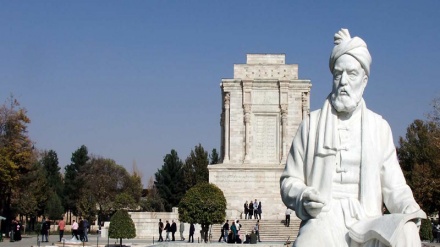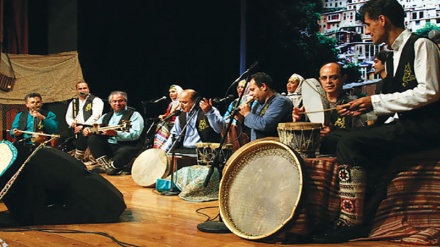Iran: Land of various ethnicities (4)
If you remember, it was said that the vast country of Iran enjoys a big variety of ethnicities each of which has its specific culture, customs and traditions.
Furthermore, the old history of this country has made it rich in terms of culture and civilization. This time we are going to make you familiar with the folk literature of Iran.
Folklore songs and melodies are part of the popular or folk literature and comprise all musical works which are common among people in the form of songs, folktales, parables, allegories, riddles, work songs, religious songs, epic songs, lullabies, nursery rhymes, play rhymes, wedding songs and childish songs. The vocabulary and expressions of these songs are usually colloquial. The compilation and registration of folklore has an old record in Iran. But the first recorded works on folklore belong to the Safavid era (1501-1736 AD). Jamal Khansari, a scholar from the Safavid era, was the first person to collect the beliefs and traditions common among the women of his time. His book “Kolsum nameh” or “Aqayed al-Nisa” was indeed the first book on the folkloric works of Iran. After that, no considerable work was done on the Iranian folklore till the Qajar era (1794-1925 AD). At the time of Naser-edDin Shah Mirza Habib-ullah Isfahani embarked on collecting and registering the folk vocabulary and terminology. Among his famous works is the translation of the book “The Adventures of Hajji Baba of Ispahan” by British diplomat and author James Justinian Morier. The book was published in 1900.
After Mirza Habib-ullah Isfahani, Mirza Ali Akbar Dehkhoda authored a book titled “Amsal-o-Hekam” in four volumes in 1932. During the Pahlavi era (1926-1979) also the trend of folklore literature continued. Sadeq Hedayat was one of the pioneers of this trend in those years. Sometimes he is considered as the founder of ethnology in Iran. He started to collect folk songs, lullabies, childish games and popular beliefs. In 1932 he authored “Osaneh” which is a national treasure of folk songs and in 1934 he wrote and published “Neirangestan”. Influenced by western nihilist writers and literary figures like Franz Kafka, Sadeq Hedayat committed suicide in 1951.
According to ethnology, songs are examined in two ways, namely, material culture and spiritual culture. Clothes, food, housing, work, engagement and martial issues indicate material elements of songs. But religion, mortality of this world, purity of heart, enthusiasm toward congregation, communion with the beloved, alienation, gratitude, ingratitude, sympathy, self-esteem, nostalgia, sentimental complaints, self-reliance etc. imply spiritual culture.
Vocabulary is not complicated and pompous in songs. The vocabulary of songs is mostly affected by the environment and life. The simple rhythms of songs sometimes make the plainness and authenticity of the singer’ thought.
At any rate, it shouldn’t be forgotten that a number of these thoughts and customs are not only pleasant but they are also reminiscent of the memories of the proud days of Iran. Comparing the stories of different nations in the entire lands of Indo-Europeans and the black, yellow and Amerindian races reveals that most of these stories exist with little changes in all these regions. This shows that different ethnicities and racial groups had once lived together and the core of these stories, beliefs, customs, poems, songs, etc. had been the same. The Iranian folk literature has a very wide variety due to the historical record and different conditions and diverse climates.
RM/ME


